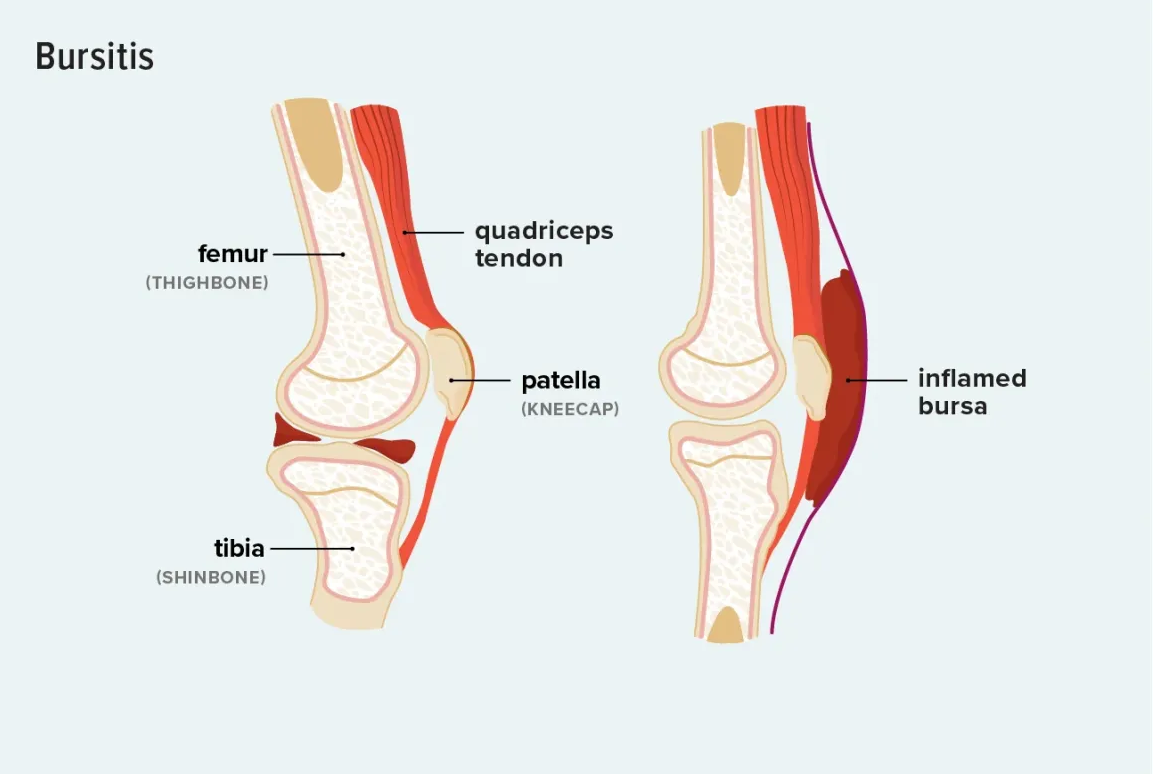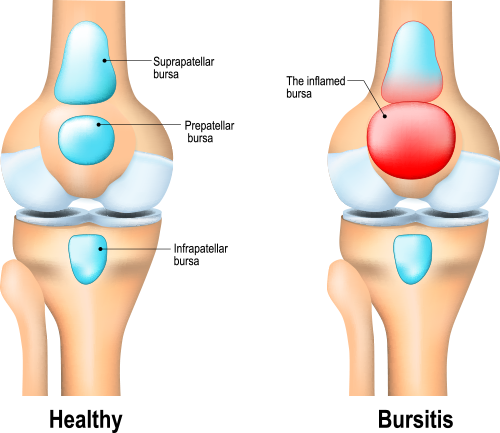August 27, 2024
Bursitis: What is it?
Types of bursitis
Your body has more than 150 bursae. Any of them may be affected by bursitis. Bursitis is most prone to occur in joints that you use often or in areas that get a lot of pressure, such as
Shoulders (bursitis sub acromial).
Elbows (also known as barfly’s elbow or miner’s elbow; olecranon bursitis).
Knees (housemaid’s knee, or prepatellar bursitis).
Feet (particularly the area around your big toe, heel, or ball of the foot).
Hips (trochanteric bursitis or iliopectineal bursitis).
Butt (also known as weaver’s bottom or ischial bursitis).
Although different forms of bursitis may have different names, they all refer to the same problem, swelling inside and around a bursa according to medical professionals.


Signs and Causes
What are the signs of bursitis?
Bursitis’s most typical signs and symptoms are:
Pain- particularly while attempting to move the afflicted bodily portion.
a restricted range of motion (the extent to which a bodily part may be moved).
Bursitis: The variables at risk
Bursitis may affect anybody at any time. Those who engage in physical labour or work with their hands, musicians, and athletes are among those who are more likely to acquire it.
Individuals with the following medical disorders are more likely to develop bursitis: arthritis, particularly inflammatory types such as psoriatic and gout.
diabetes and thyroid conditions.
Why does bursitis occur?
Bursitis is frequently caused by repetitive activities, such as moving heavy boxes at work or tossing a baseball as a pitcher. Spending time in positions that increase strain on a certain portion of your body (such as kneeling) can also cause.
Infections and traumas can also result in bursitis, but less frequently.
Bursitis can result from several activities such as painting, raking and gardening, carpentry, etc.
Incorrect alignment of a joint or bone (caused by misaligned legs, bone spurs, or arthritis in a joint.
Tests and Diagnosis: How is bursitis identified?
Bursitis is diagnosed by a medical professional through physical examination. In addition to asking you about your symptoms, they’ll look at the region surrounding the injured body part. Inform your doctor about your activities prior to the onset of symptoms, including any repetitive motions you were doing for work or fun.
Handling and Medical Interventions
What is the most effective bursitis treatment?
Usually, bursitis may be treated with rest. Steer clear of positions or activities that aggravate your bursa.
By taking a vacation from activities that strain that area of your body, you’ll allow it to heal and avoid being hurt again. Find out from your doctor how long you’ll need to take it easy and refrain from exercising.
In order to lessen discomfort and swelling while your bursa recovers, your doctor may recommend the following at-home therapies:
Raise the affected area.
Cover the area with ice. Several times a day, apply a cold compress or ice packs covered in a thin towel to the affected region for 15 minutes at a time.
Use heat (a hot water bottle covered in a towel or a heating pad). Your physician may advise alternating between heat and ice.
The majority of bursitis cases resolve on their own with rest and self-care.

